Southeastern Virginia is home to some of the county’s most historic churches, many graced by stained glass masterworks. As the sun streams through these richly hued works of color and light, it seems impossible that such miracles are wrought of simple silica and pigment. You have to see it with your own eyes. Take an afternoon to visit these sacred spaces and be transformed by the power of these windows. The Virginia Arts program has put together a stained glass driving itinerary for you to follow and to take it a step further you can purchase a booklet that dives deeper into the stained glass history.
Although access to the Churches and Temple may not be permitted at this time, the buildings and grounds are beautiful and worthy of a visit.
Central Baptist Church
701 W Olney Road
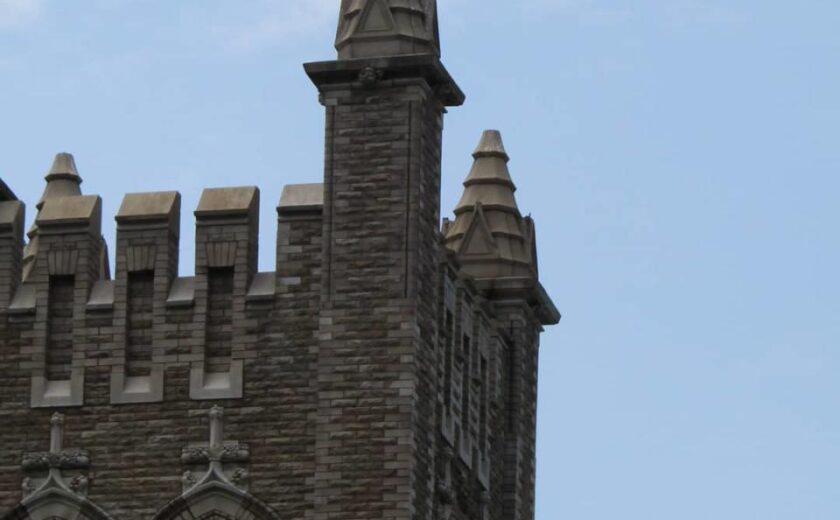
Highlight: Nativity, Colgate Art Glass Co, 1904
The humble manger scene has been transformed into dramatically – lit tableau featuring a picturesque shelter, blooming lilies, benevolent animals, richly dressed visitors, and even gracefully curling incense smoke.
Christ and St. Luke’s Church
560 W Olney Road
Highlight: Annunciation, Mayer & Co., 1910
The Holy Spirit, taking the form of a dove, comes upon her as she agrees to be the Mother of God. A blooming lily plant symbolizes her purity.
Highlight: Munich
Highlight: The Prodigal Son, Mayer & Co., 1910
The parable of the prodigal son tells of a father’s unwavering love, of his patience with a wayward child and of joy at the child’s repentance. The greenery sprouting at their feet and the lush fields beyond symbolize abundance and rebirth.
Epworth United Methodist Church
124 W Freemason St
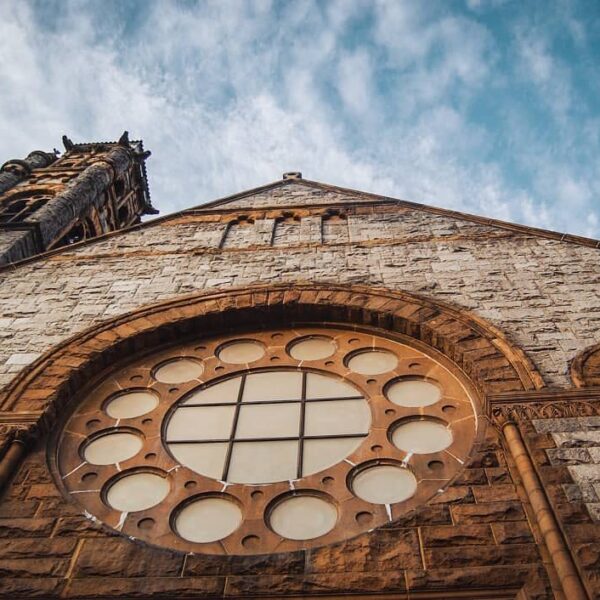
Highlight: Faith, Hope and Charity, J & R Lamb Studios, 1910
The memorial windows at Epworth are a treasure trove of allegorical figures in the stained glass. The skill of the painter is evident in the delicate rendering of the faces and the refined details of the limbs.
Highlight: Christ Visiting the Home of Mary and Martha, 1907
The transformation of Martha and Mary’s home into a Roman villa reflects the persistence of that image into the early 1900s and is a nod to the Neoclassicism of the American Renaissance.
Highlight: Rose Window, J & R Lamb Studios, 1897
This sun-like figure at the common axis of twelve planets suggests Christ, the source of light, surrounded by twelve disciples.
First Presbyterian Church
820 Colonial Ave
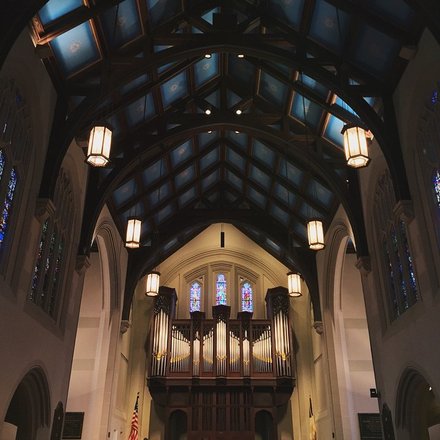
Highlight: Christ in the Home of Mary and Martha, J & R Lamb Studios, 1912
This window closely matches the poses of the figures in the original, the main difference being that Mary is moved further to the right in the enlarged canvas.
Highlight: Old Testament, Willet Hauser Architectural Glass, 1996
Following the Gothic format, several narratives are presented in the many different lights of this transept window.
St. Andrew’s Episcopal Church
1009 W Princess Anne Rd
Highlight: Jerusalem Temple at the Altar of Incense
“Victorian” is often an unflattering designation of an amalgamation of disparate styles. The pictorial quality of these windows is reassuringly familiar and for many, highly evocative and a large part of their appeal.
St. Mary’s Catholic Church (Basilica of St. Mary of the Immaculate Conception)
232 Chapel St.
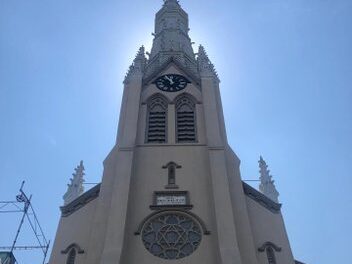
Highlight: Rose window, Mayer & Co., 1923-25
The design of a rose window often reflects the medieval reverence for numbers. Geometry was thought to mirror a divine order and certain numbers had biblical significance. Eight flowers, each made up of eight petals, surround a larger flower of similar composition.
St. Paul’s Episcopal Church
201 St Pauls Blvd
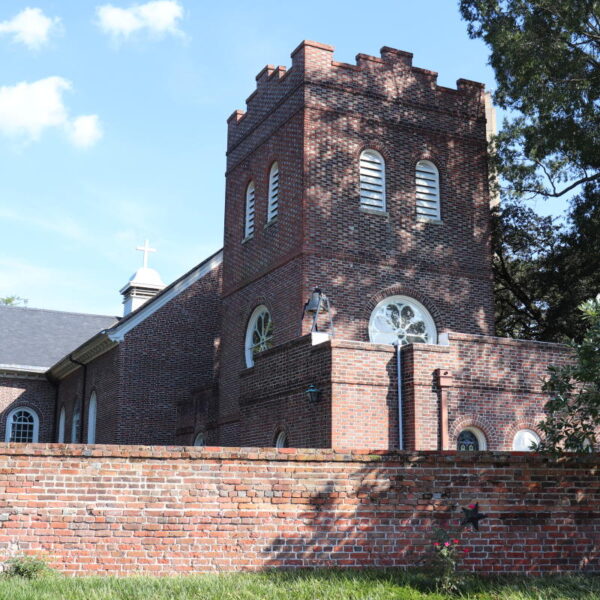
Highlight: Madonna and Child, the Hermann Company, 1892
The relationship between Jesus and his mother is a favorite subject among artists. The window does not get much light from the outside and therefore is highly dependent on the reflective nature of the glass.
Highlight: Three Women at the Tomb, Tiffany Studios, 1906
The empty tomb is a symbol of the Resurrection. The light coming from the tomb hints at the heavenly messenger who greets them with the news of the risen Christ.
Temple Israel
7255 Granby St
Highlight: Abraham, Ascalon Studios, 1991
Plants shoot up next to Abraham, symbolizing the fertility that he and his wife would be blessed within their old age. Here we see Abraham with his face turned toward the sky, his arms raised up as if to embrace the stars.
Highlight: David and Goliath, Ascalon Studios, 1991
Goliath looms in the distance, feet planted squarely on the ground, shield and sword at the ready. His confident stance shows no sign that he is threatened by his youthful, unarmed challenger, who carries a bag of stones.
Highlight: The Flood, Ascalon Studios, 1991
The story of the Great Flood is well known. The sun is shining in the background and a rainbow has appeared, signaling a new covenant with God and hope for a world reborn.
Highlight: Swords and Plowshares, Ascalon Studios, 1991
The larger part of the window is dominated by a figure poised to strike his sword. Behind him, someone is pushing a plow. This sun rises in the distance, signaling the coming of a new age. Isaiah’s prophecy describes a vision of world peace.